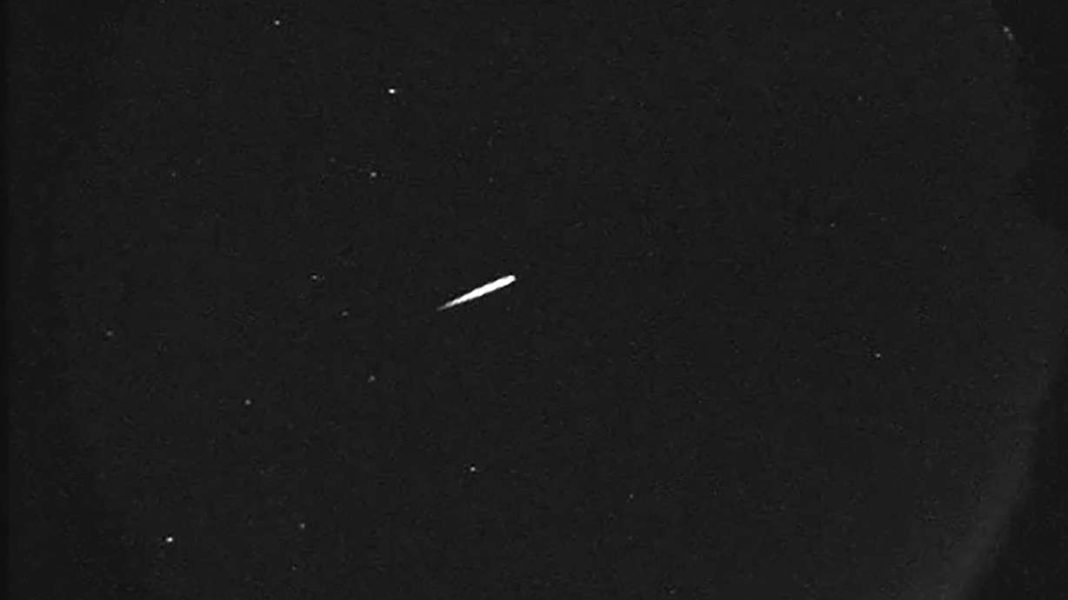Hey stargazers and cosmic dreamers! Ever wonder if you could catch a glimpse of something truly ancient, zipping across our night sky? Well, guess what – you absolutely can! We’re talking about the Orionid meteor shower, a celestial fireworks display that’s not just beautiful but also carries a fascinating legacy: it’s made from the leftover pieces of one of history’s most famous comets, Halley’s Comet. Talk about a cosmic connection!
Imagine tiny specks of dust, shed by a legendary comet centuries ago, now burning up in our atmosphere. That’s what you’re about to witness. It’s like a yearly cosmic rendez-vous, and it’s surprisingly easy to enjoy if you know a few tricks. So, let’s get you ready to gaze up and catch some shooting stars!
The Orionids: A Relic of Halley’s Comet
You heard right! The stunning streaks of light you’ll see during the Orionid shower aren’t just random space debris. They are, in fact, dust and ice particles that were once part of Halley’s Comet. As this icy wanderer makes its long, elliptical journey around the Sun, it leaves a trail of cosmic crumbs in its wake. Every time Earth passes through this particular debris field, these tiny bits of comet smack into our atmosphere at incredibly high speeds – often around 148,000 miles per hour! The friction causes them to superheat and glow, creating those brilliant “shooting stars” we love to spot.
Because these meteors appear to originate from a point near the constellation Orion (hence the name!), they’re known for being quite fast and often leave persistent trains – glowing trails that linger for a few seconds after the meteor has vanished. It’s a truly breathtaking sight, knowing you’re watching a piece of history disintegrate right before your eyes.
Your Guide to Catching the Cosmic Show
Ready to experience this cosmic spectacle? Here’s how to give yourself the best chance:
Find Your Dark Sky Sanctuary
This is rule number one for any meteor shower. Light pollution is your arch-nemesis. Head as far away from city lights as possible. Parks, rural areas, or even just your backyard if it’s reasonably dark, can work wonders. The darker the sky, the more meteors you’ll see. Give your eyes at least 20-30 minutes to fully adjust to the darkness; this makes a huge difference!
Comfort is Key
Stargazing involves a lot of looking up, so ditch the standing around! Bring a comfortable lounge chair, a blanket, or even just lie flat on the ground. Staying warm is also crucial, even on mild nights, as inactivity can make you feel cold quickly. Pack some snacks and a warm drink to make the wait more enjoyable.
Patience and the Naked Eye
Unlike planets or nebulae, you don’t need fancy equipment for meteor showers. Your naked eye is perfect, offering the widest field of view to catch these quick streaks. Just look towards the general direction of Orion, but don’t fixate on one spot. Scan the sky! Meteors can appear anywhere. “It’s all about embracing the quiet, dark moments and letting the universe come to you,” advises amateur astronomer, Sarah Jenkins. “The magic really happens when you just relax and let your eyes wander.”
Remember, meteor showers happen in bursts, so there might be lulls followed by several meteors in a short span. Patience is truly a virtue here.
A Glimpse of Eternity
Watching the Orionid meteor shower is more than just seeing pretty lights; it’s a moment to connect with the vastness of space and time. You’re witnessing fragments of a comet that has awed humanity for millennia, blazing across the very same sky. It’s a spectacular reminder of our place in the cosmos and a truly unforgettable experience. So, bundle up, look up, and let the leftover magic of Halley’s Comet light up your night!




